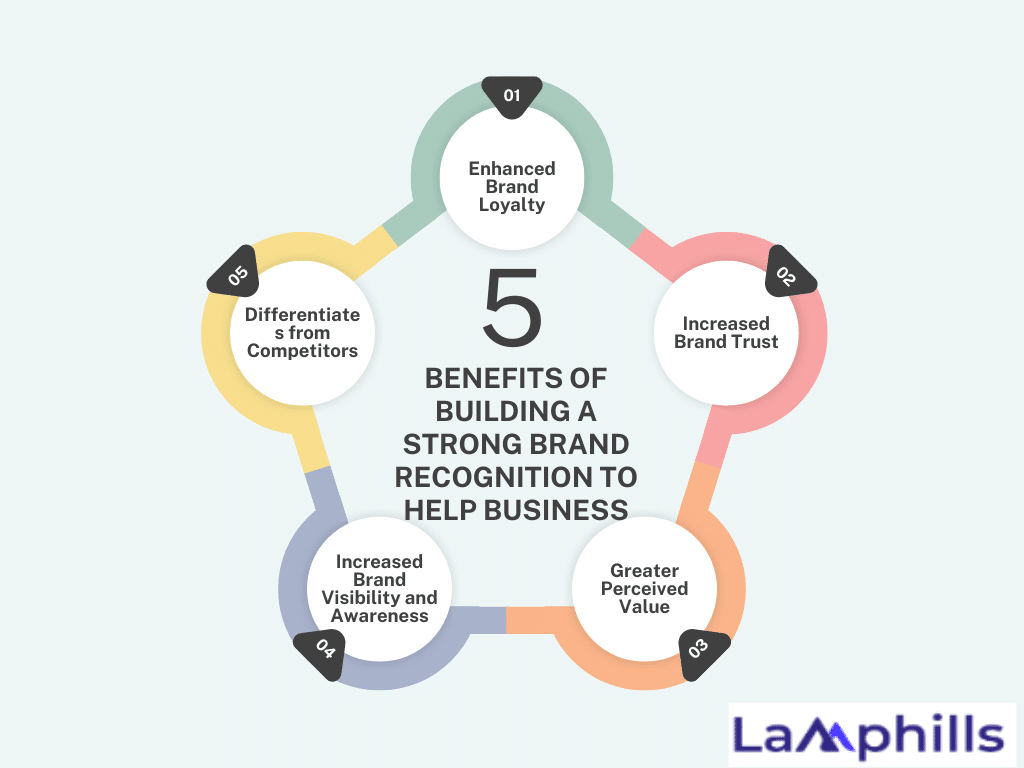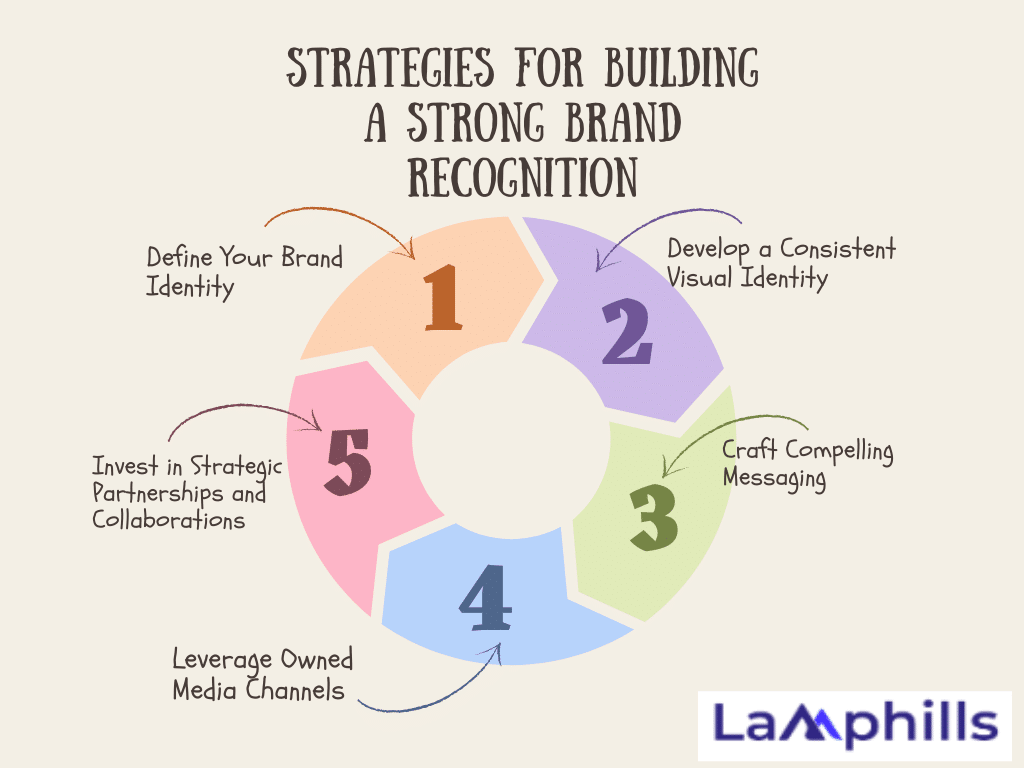Building a strong, recognizable brand is one of the most valuable investments a business can make. As an expert who has years of experience, I’ve seen how a well-crafted brand can transform a company’s fortunes. It’s not just about creating a pretty logo. In this article, I’ll explain the reason “why brand recognition help businesses”, diving into the top benefits of brand recognition and explore practical strategies to help you build a brand that commands attention and loyalty. You should read through to gain extensive knowledge so you can apply it to your business and forge unbreakable connections with your customers. Don’t forget to download our Free gift for offline purposes.
Key Takeaways
- Building a strong, recognizable brand is a crucial investment for businesses, as it creates familiarity and comfort for consumers, making them more likely to choose your products over others.
- A widely recognized brand allows businesses to command premium prices, as customers perceive the brand’s products or services as high-quality and exclusive. Strong brand identities enable service-based businesses to attract discerning clients and justify higher rates.
- A strong brand differentiates a business from its competitors, creating a competitive edge. When a brand becomes synonymous with a product or service category, it stands out in the crowded marketplace, giving it an advantage over less-established brands.
Brand Recognition
Think about it. Have you ever walked into a store, completely overwhelmed by the sheer number of similar-looking products, then subconsciously reached for the brand you recognized? That’s it! Brand recognition creates a sense of familiarity, a comfort zone that makes us feel safe in our purchasing decisions in turn help businesses. When I think back to the companies that have stuck in my mind over the years, it’s usually the ones with a distinct personality and a clear brand identity. Take Apple, for example. Their sleek, minimalist aesthetic and focus on innovation have made them one of the most recognizable brands on the planet. Or consider Nike, with their iconic “Just Do It” slogan and emphasis on athletic performance and personal empowerment. These brands have transcended the products they sell to become cultural phenomena.
Benefits of Building a Strong Brand Recognition
There are reasons why brand recognition can help boost diverse businesses. Listed below in the infographics are the benefits of building a recognizable and sustainable brand that will in turn increase profit and productivity:

#1. Enhanced Brand Loyalty
When you’ve established a strong brand identity, your customers are more likely to feel a deep emotional connection to your business. They’ll see you as more than just a provider of products or services you’ll become an integral part of their lives and something they genuinely care about. This breeds loyalty, which is invaluable in an increasingly competitive marketplace.
#2. Increased Brand Trust
A strong, recognizable brand signals to your audience that you’re a reliable, trustworthy business that they can count on. I worked with a financial planning firm that was struggling to stand out in a crowded market. By developing a brand identity that emphasized their commitment to ethical, personalized advice, we were able to position them as a trusted advisor rather than just another faceless corporate entity. Their website traffic and lead generation skyrocketed as a result, proving the power of brand trust.
#3. Greater Perceived Value
When your brand is widely recognized and respected, customers are often willing to pay a premium for your products or services. They associate your brand with quality, expertise, and exclusivity, making them more likely to view your offerings as valuable investments rather than commodities. I’ve worked with service-based businesses, too, where a strong brand identity has allowed them to command higher rates and attract a more discerning clientele.
#4. Increased Brand Visibility and Awareness
A recognizable brand is essentially free advertising. When your logo, colours, and messaging are instantly recognizable, you’re constantly reinforcing your presence in the minds of your target audience. This can pay huge dividends in terms of lead generation, customer acquisition, and overall brand awareness.
#5. Differentiates from Competitors
To increase brand recognition set businesses apart from their competitors and help them grow. When a brand becomes synonymous with a specific product or service category, it creates a competitive ad. In a crowded marketplace, a strong, recognizable brand can be the key differentiator that sets you apart from your competitors. When customers can instantly recognize and recall your brand, it gives you a significant edge over less-established players.
Strategies for Building a Strong Brand Recognition
Now that we’ve explored the many benefits of strong brand recognition, let’s dive into some practical strategies for building a memorable, impactful brand. See infographics below:

#1. Define Your Brand Identity
The foundation of any successful brand-building effort is a clear, well-defined brand identity. This encompasses everything from your core values and brand personality to your visual aesthetic and messaging style. Take the time to dig deep and understand what makes your business unique, and use that as the guiding principle for all of your branding decisions.
#2. Develop a Consistent Visual Identity
Consistency is key when it comes to building a recognizable brand. Your logo, colour palette, typography, imagery, and overall aesthetic should all work together to create a cohesive, instantly recognizable visual identity. This visual consistency helps to reinforce your brand’s personality and make a lasting impression on your audience.
#3. Craft Compelling Messaging
I remember working with a B2B software company that was struggling to communicate the value of their product. By helping them develop a brand messaging strategy that focused on the specific pain points and aspirations of their ideal customers, we were able to craft a narrative that struck a chord. Your brand’s messaging from your tagline and brand story to your social media captions and customer communications is what truly brings your identity to life. Crafting clear, compelling, and consistent messaging that resonates with your target audience is essential for building strong brand recognition.
#4. Leverage Owned Media Channels
In today’s digital landscape, owning and controlling your brand’s media channels is crucial for building recognition and visibility. This includes your website, blog, social media profiles, and any other digital properties you use to engage with your audience. Many of my clients have tremendous success by consistently publishing high-quality content on their owned channels.
#5. Invest in Strategic Partnerships and Collaborations
Collaborating with other brands, influencers, or industry leaders can be a powerful way to amplify your brand’s visibility and credibility. By aligning your brand with trusted, respected entities, you can borrow some of their brand recognition and credibility to boost your own.
How are Brand Recognition Levels Determined?
Brand recognition levels are determined through various methods and metrics. Here are some key factors and approaches used to assess brand recognition:
- Market Research: Companies often conduct market research to evaluate the success of their brand recognition strategies. This can involve surveys and questionnaires to measure consumer familiarity and recognition of a brand.
- Unaided and Aided Awareness: Unaided awareness measures the ability of consumers to spontaneously recall a brand without any prompts, while aided awareness assesses recognition when consumers are prompted with the brand name or visual cues.
- Brand Tracking Software: Utilizing brand tracking software allows businesses to monitor brand recognition, awareness, sentiment, and other relevant factors. These tools provide valuable insights into the effectiveness of branding efforts.
- Share of Voice (SOV): SOV compares a brand’s visibility to that of its competitors, indicating its market presence and recognition among consumers.
- Brand Awareness Index: The Brand Awareness Index quantifies the level of familiarity and recognition that customers have with a brand. It considers factors such as reach, recognition, and recall to determine an overall brand awareness score.
- Consumer Perception and Preference: Assessing consumer perception and preference through surveys, focus groups, or social media sentiment analysis can provide insights into brand recognition levels.
How to Measure the Impact of Brand Recognition
As a business owner, it’s important to track the impact of your brand recognition efforts and make data-driven decisions to optimize your strategy. There are several key methods and metrics you can use to measure the success of your brand recognition efforts, including:
- Brand Awareness Surveys: Questionnaires that assess consumers’ familiarity with a brand and its products or services.
- Unaided Awareness: Measures a brand’s ability to spontaneously come to consumers’ minds when thinking about a specific product or service category.
- Aided Awareness: Measures the recognition of a brand when prompted with its name or visual cues.
- Share of Voice (SOV): Compares a brand’s visibility to that of its competitors, indicating its market presence.
- Brand Tracking Software: Provides reliable measurement of brand recognition, awareness, sentiment, and other factors.
- Influencer Marketing Impact: Tracks the impact of influencer partnerships on brand awareness, such as engagement and follower growth resulting from influencer posts.
- Brand Awareness Index: A metric that evaluates a brand’s visibility, recognition, and recall among its target audience.
By utilizing these methods and metrics, businesses can gain insights into their brand’s visibility, reputation, and growth, allowing them to make informed decisions and improve their brand impact.
Examples of Successful Brand Recognition Strategies.
Many inspiring case studies showcase successful brand recognition strategies. These case studies demonstrate the diverse ways in which successful brands have leveraged brand recognition strategies to stand out in their respective industries.
Here are a few that I’ve put together:
- Airbnb: As a relatively newer brand, Airbnb has managed to achieve remarkable brand recognition in a short time. Through its visually striking brand identity, its emphasis on user-generated content, and its focus on the unique experiences it provides, Airbnb has established itself as a trusted and desirable alternative to traditional hospitality options. Their ability to create a strong emotional connection with their target audience has been a major factor in their brand recognition success.
- Starbucks: The coffee giant Starbucks has built an incredibly strong brand identity that is recognized worldwide. Through their distinctive green logo, its emphasis on the “third place” concept (between home and work), and its consistent in-store experience, Starbucks has created a brand that is synonymous with premium coffee and a cosy, modern atmosphere. Their ability to create a sense of community and brand loyalty among their customers has been a key driver of their brand recognition success.
- Lego: The beloved toy brand Lego has successfully maintained its brand recognition for decades. Through their instantly recognizable brick-based toys, their focus on creativity and imagination, and their expansion into movies, video games, and theme parks, Lego has created a brand that resonates with both children and adults. Their ability to consistently deliver high-quality, engaging products that tap into the universal human desire to build and create has been a key factor in their brand recognition success.
Studying these examples can provide valuable insights and inspiration for businesses looking to enhance their own brand recognition efforts.
How to Overcome Challenges When Building a Brand
Sharing my story on how I overcame challenges when using brand recognition to help my businesses will serve as a boost and insight into how you can make a difference.
I faced several challenges in the field of brand recognition, including establishing credibility, limited resources, and adapting to evolving market trends. I was able to build credibility by offering services at reduced rates or for free in exchange for testimonials. Also, I was faced with limited resources, which I managed by leveraging social media platforms, cost-effective marketing techniques, and partnerships with complementary businesses. I remembered that I had to also stay updated with the latest industry trends, attend some conferences and webinars, and engage in continuous learning to stay relevant and effective.
By embracing innovation and being open to change, I was able to incorporate new techniques into my brand recognition campaigns and offer cutting-edge solutions to my clients.
How do you use Brand Recognition?
Brand recognition can be achieved through the following:
- Consistent visual identity
- Sponsorships and partnerships
- Social media presence
- Content marketing
- Delivering exceptional customer experiences
- Targeted advertising and marketing campaigns
- Public relations efforts
- Maintaining consistency and persistence.
By implementing these strategies, businesses can increase and help brand recognition, and establish a strong presence in the market.
Using a comprehensive template will easily assist you with establishing the right steps to take to increase your business recognition. You can have access to the Lamphill Brand Strategy Template in PDF format below:
Is Brand Recognition a Strength or an Opportunity?
Brand recognition can be considered both a strength and an opportunity for businesses.
As a strength, brand recognition signifies that a business has successfully established itself in the market and has gained visibility and awareness among its target audience. It indicates that customers are familiar with the brand and can easily identify it, which can lead to increased trust, customer loyalty, and a competitive advantage over other brands.
On the other hand, brand recognition also presents an opportunity for businesses to further leverage their visibility and reputation. With a recognized brand image, businesses can capitalize on their existing customer base and expand their reach to attract new customers. It provides a platform for launching new products or services, entering new markets, and building partnerships or collaborations.
What is Coca-Cola Brand Recognition?
Coca-Cola has achieved significant brand recognition worldwide. With a long history and successful marketing strategies, Coca-Cola is one of the most recognized and powerful brands globally. The company’s advertising strategy, which includes extensive promotion and sports sponsorships, has contributed to its high visibility and recognition. Coca-Cola’s brand is known for its consistency in messaging, iconic red and white logo, and association with happiness and refreshing experiences. The brand has achieved remarkable global recognition, with 94% global trademark recognition and 96% brand awareness in the United States. Coca-Cola’s brand value and market capitalization further demonstrate its strong brand recognition and influence in the market.
Is Brand Recognition a Competitive Advantage?
Brand recognition can be a significant competitive advantage for businesses. It helps differentiate a brand from competitors, build customer trust and loyalty, command premium pricing, establish market dominance, attract new customers, enhance credibility, and generate positive word-of-mouth marketing. Overall, brand recognition contributes to a brand’s success by giving it an edge in the marketplace.
Conclusion
Brand recognition is a formidable force that can propel businesses to new heights. By harnessing its power, businesses can enjoy enhanced customer loyalty, premium pricing power, and a competitive edge. Now, with this strategy and benefit highlighted why does Brand Recognition help businesses? It’s your turn to unlock the potential of brand recognition strategies enumerated above. But as the business landscape grows, so must our approach to brand recognition. To stay ahead of the curve, it’s important to embrace innovation and explore new ways of connecting with our customers. How will you leverage this powerful tool to elevate your business to new heights?
Related Article
- How I Mastered Brand Communications: Strategies for Clear and Effective Messaging
- HOW TO MEASURE BRAND AWARENESS: Tips To Improve Your Brand Strategy
- 15 Famous Brand Positioning Examples to Inspire Your Brand Strategy (+ Branding Tips)
- What is Brand Monitoring, and Why Is It Important For Your Business?






